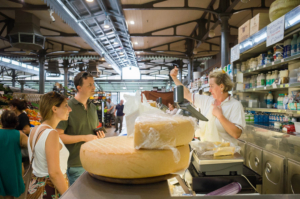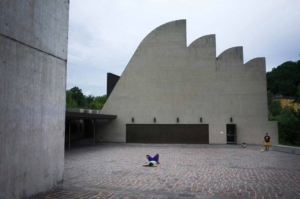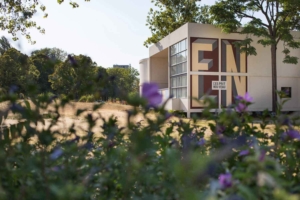Aldo Rossi’s San Cataldo Cemetery in Modena: guide & visit
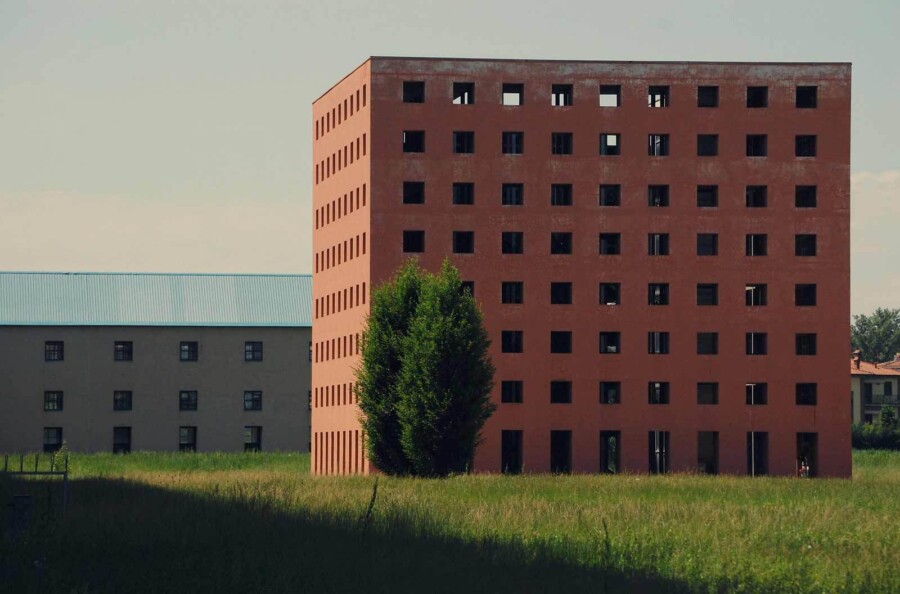
You can call it Modena's Sagrada Familia.
It's San Cataldo Cemetery, designed by architects Aldo Rossi and Gianni Braghieri in the 1970s, that, after decades from its birth, is still incomplete.
However, despite that, this abandoned city remains a masterpiece that you should visit.
In this article, we’ll delve into the story behind the cemetery, explore the vision of Aldo Rossi, and highlight the unique materials and philosophy that define this iconic site.
Aldo Rossi: the visionary behind San Cataldo cemetery
Aldo Rossi (1931–1997) is one of Italy’s most celebrated architects, widely regarded for his innovative approach to architecture and his integration of history into contemporary design.
Renowned critic Vincent Scully once likened Rossi to Le Corbusier, emphasizing his painterly, artistic approach to architecture.
Rossi's body of work extends far beyond the San Cataldo Cemetery.
He was not only a skilled architect but also a theorist, author, and teacher, leaving a profound impact on the architectural world. His work is celebrated for its poetic quality, where historical elements and collective memory are seamlessly integrated into modern contexts.
What is Aldo Rossi’s philosophy?
Rossi’s architectural philosophy was deeply rooted in the concept of memory.
Rossi believed that the past is an essential component of contemporary design.
For him, cities and buildings are living records of time, carrying the weight of history and collective memory.
In his work, Rossi often juxtaposed historical elements with modern forms, creating a dialogue between the old and the new.
This approach is evident in the San Cataldo Cemetery, where the minimalist design of the modern section contrasts with the neoclassical elegance of the 19th-century porticoes.
Rossi’s work also challenges the notion of functionality in architecture.
He viewed buildings as more than just physical structures; they are symbols, narratives, and vessels of meaning.
This is why the San Cataldo Cemetery feels more like a contemplative space than a traditional burial ground.
Where did Aldo Rossi teach?
Rossi’s influence on architecture was not limited to his buildings.
As an educator, he shaped generations of architects.
He began his teaching career in the early 1960s at the Polytechnic University of Milan and later taught at the Istituto Universitario di Architettura in Venice (IUAV).
His teachings reflected his philosophy, emphasizing the interplay of memory, history, and urban life in architectural design.
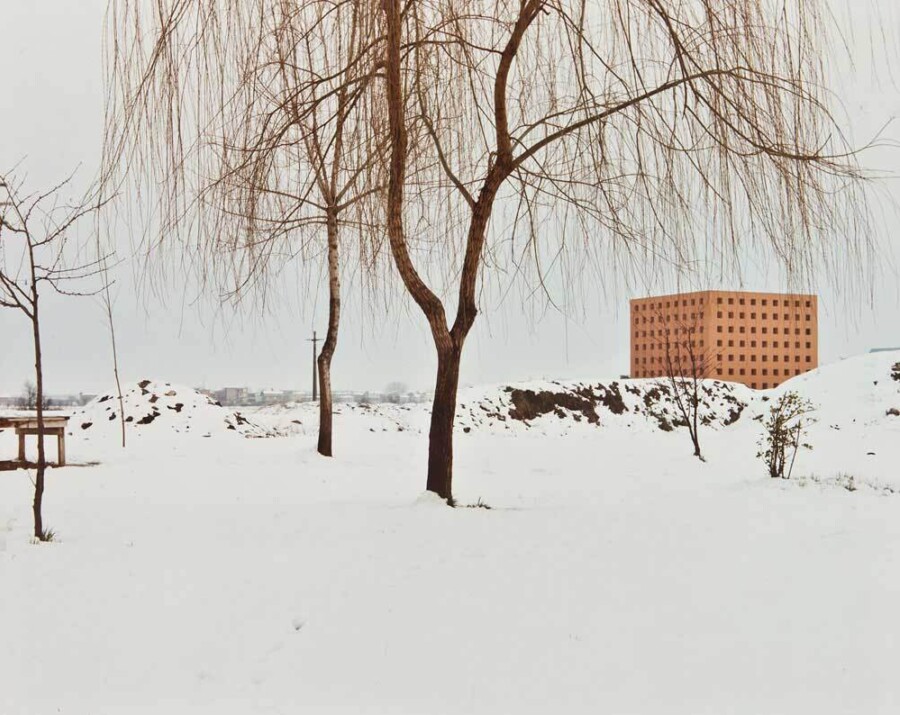
The brick-coloured cube of Modena Cemetery in a photo by Luigi Ghirri - 1985. Courtesy of Archivio Luigi Ghirri
The history of San Cataldo cemetery in Modena
When was the San Cataldo cemetery built?
The San Cataldo Cemetery is a fascinating blend of two distinct eras of design and architecture. Its origins trace back to the 19th century when Cesare Costa designed the cemetery's original rectangular section.
This earlier area is characterized by Doric four-sided porticoes, complete with tympanums and niches, embodying the neoclassical aesthetic of the time.
The modern addition to the cemetery, however, was conceptualized much later, in 1971, when Aldo Rossi, alongside Gianni Braghieri, introduced a starkly different architectural language.
Let's start the story from the beginning.
The blue of the sky: a new cemetery for Modena
In 1971 the Municipality of Modena published a call for proposals for the extension of the San Cataldo cemetery.
Cesare Costa had designed the previous neoclassical cemetery between 1860 and 1875. The new project will rise next to it, on agricultural land.
50 designers take part in the competition to build the cemetery.
The winning project is "The blue of the sky", by architects Aldo Rossi and Gianni Braghieri.
The city of the dead: the project by Rossi and Braghieri
The idea of this project was that the things, the objects, the constructions of the dead are no different from those of the living - Aldo Rossi
The architects' idea is to create a real city of the dead.
Both the dimensions and compositional elements are traditional and recall the neoclassical cemetery of Costa.
The innovation is in the internal parts: they are inspired by the Emilian cities, like the porticoes of Bologna, the squares and the architecture of the shadows.
The City of the Dead is a mix of elementary geometric shapes.
Cubes, triangles and circles, like inside a De Chirico painting.
But it also has the shape of a labyrinth and a game of the goose, with the central part as the endpoint of the tour.
The prevailing color inside the structures is the gray of the plaster.
On the outside, instead, the use of color is much more evident, as it highlights the different roles of the buildings.
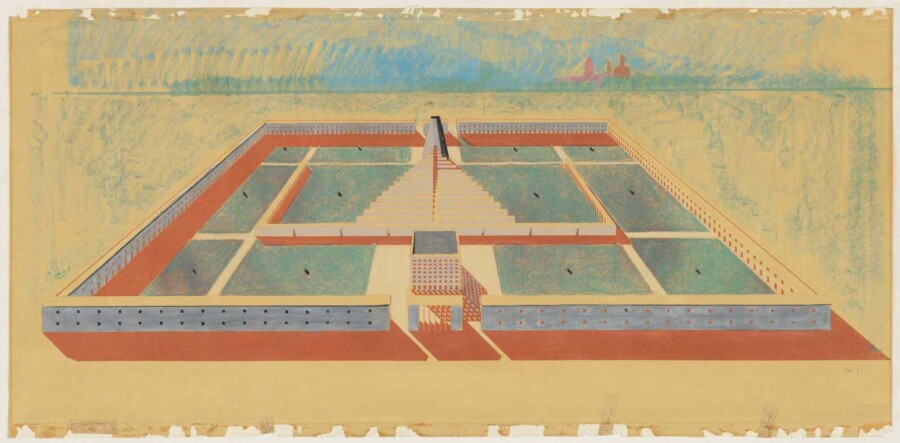
Aerial perspective drawing of Cemetery of San Cataldo, Modena by Aldo Rossi. 1971, courtesy of MoMa
The cube: the house with no windows
One of the most important and most impactful elements of the Modena Cemetery is the cubic block, the first structure encountered when entering.
It is an open-air volume, brick-coloured, perforated with simple square holes with no windows.
In the original project, it had to contain the sacrarium of those fallen in the world wars and in the partisan struggle, but it was later transformed into an ossuary.
Rossi defines it as "the house of the dead, an unfinished and abandoned house".
Like a life broken during its journey, of which only the memory remains.
The cone: the church of all religions
From the cube, the central spine of the ossuaries arranged in a triangle generates an optical illusion that captures the viewer and directs him like an arrow.
The destination is the conical tower, the most symbolic element of the Cemetery.
This truncated cone-shaped building has a unique natural light coming from above.
It's a monument to the dispossessed and the common grave that houses the remains of the abandoned dead.
Inside the cone, there's a chapel called the church of all religions. Like a Pantheon without symbols, this is the place to celebrate the deceased regardless of their faith.
The cone represents an open bridge to the spirit, to the divine.
But the bad news is that this bridge is still to be built.
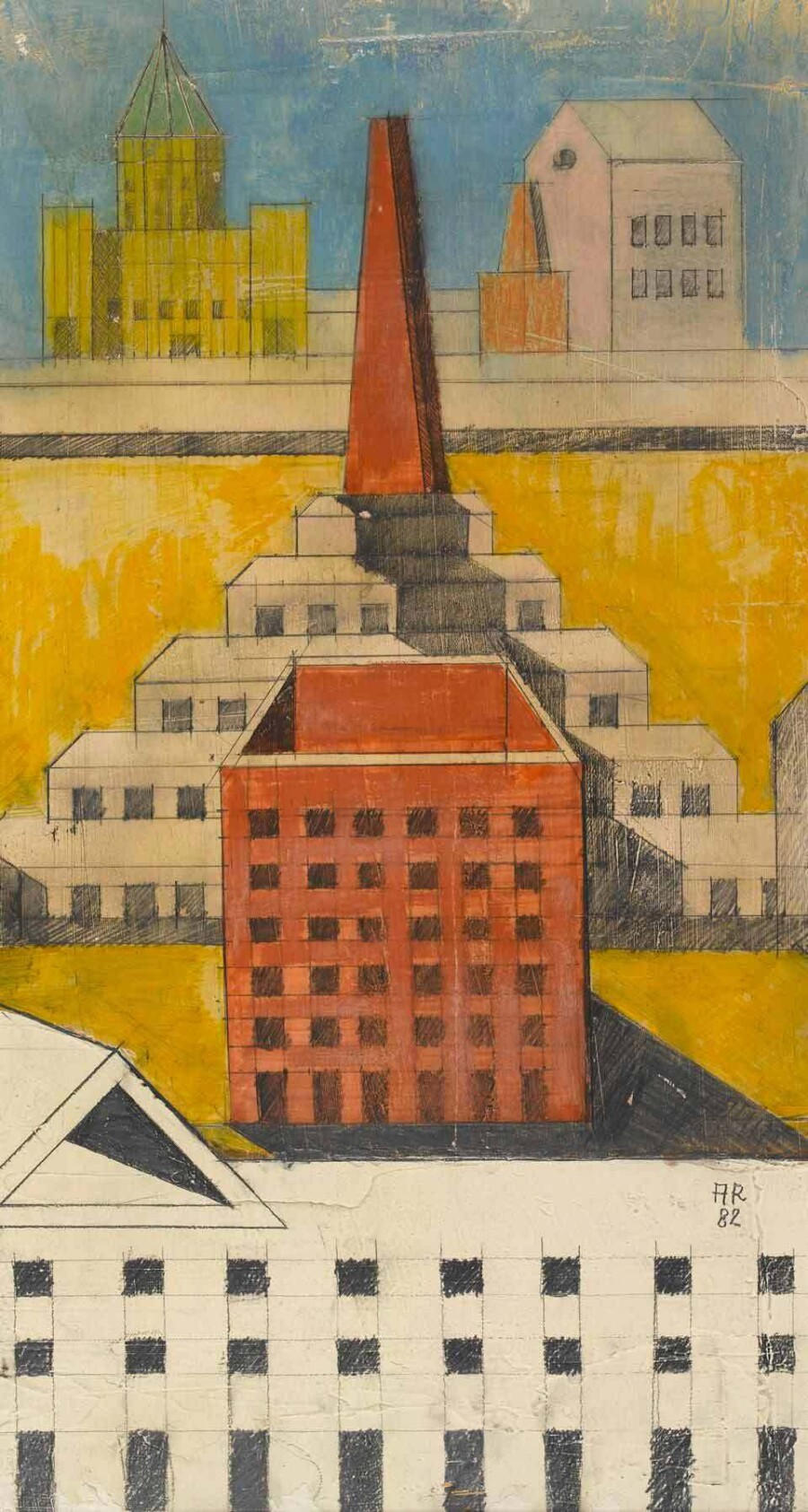
Aldo Rossi drawing of San Cataldo Cemetery - 1982
The miss: the unfinished city of the spirit
The construction site of the Modena Cemetery by Aldo Rossi began in 1976.
Over time, many construction companies, with the use of different techniques and finishing, have worked on it.
The last works date back to 2011, but at the moment, only about 40% of the project has been completed.
It certainly doesn't help that locals of Modena prefer to bury their dead in the provincial cemeteries, which have had to be enlarged.
Aldo Rossi's Cemetery is not just an aesthetic masterpiece born from the vision of an architect.
It is a democratic Cemetery, where all the dead have the same dignity. There are no opulent chapels or funerary monuments, like in Certosa Cemetery in Bologna, celebrating past glories.
A minimal and geometric Sagrada Familia, a city for the spirit waiting to be lived.
Practical info
Planning your visit
San Cataldo is Modena’s municipal cemetery. Entry is free and open to visitors, but remember this is still an active burial place, so a respectful attitude is required.
How to get there
The cemetery is located on Via San Cataldo, about ten minutes by car from the city centre. Free parking is available near the entrance.
If you prefer public transport, bus lines 9 and 10 connect the centre with the stop “San Cataldo”. Cycling is another easy option: it takes about 15 minutes from Piazza Grande.
View on Google Maps
Opening hours & entry
-
Summer (April – September): daily 7:00 – 19:00
-
Winter (October – March): daily 7:30 – 17:30
Closed on December 25th and January 1st.
Admission is free.
Cimitero di San Cataldo
Via San Cataldo, 41123 Modena
Tel. +39 059334103
Keep exploring Modena
San Cataldo is not just a cemetery to cross in silence.
It feels like an unfinished novel: the cube, the cone, the empty spaces are chapters that Aldo Rossi never completed, but that still tell a story of memory and time.
Standing there, you realise that architecture can mourn, console and question all at once.
If Modena can hold such a place of paradox and poetry, imagine what else the city hides.
From bustling food markets to the aroma of traditional balsamic vinegar, from Ferrari’s legacy to world-class trattorias, every stop adds a different note to the journey.
Keep the journey alive with our guide to the best things to do in Modena.
Sources and references
- La lezione di Aldo Rossi, Bononia University Press 2008
- Aldo Rossi, Autobiografia scientifica, Pratiche Editrice, Milano
1999
- Fondazione Aldo Rossi
- Interview with architects Gianni Braghieri and Rossella Cadignani
Cover photo: Elena Margherita Colli
